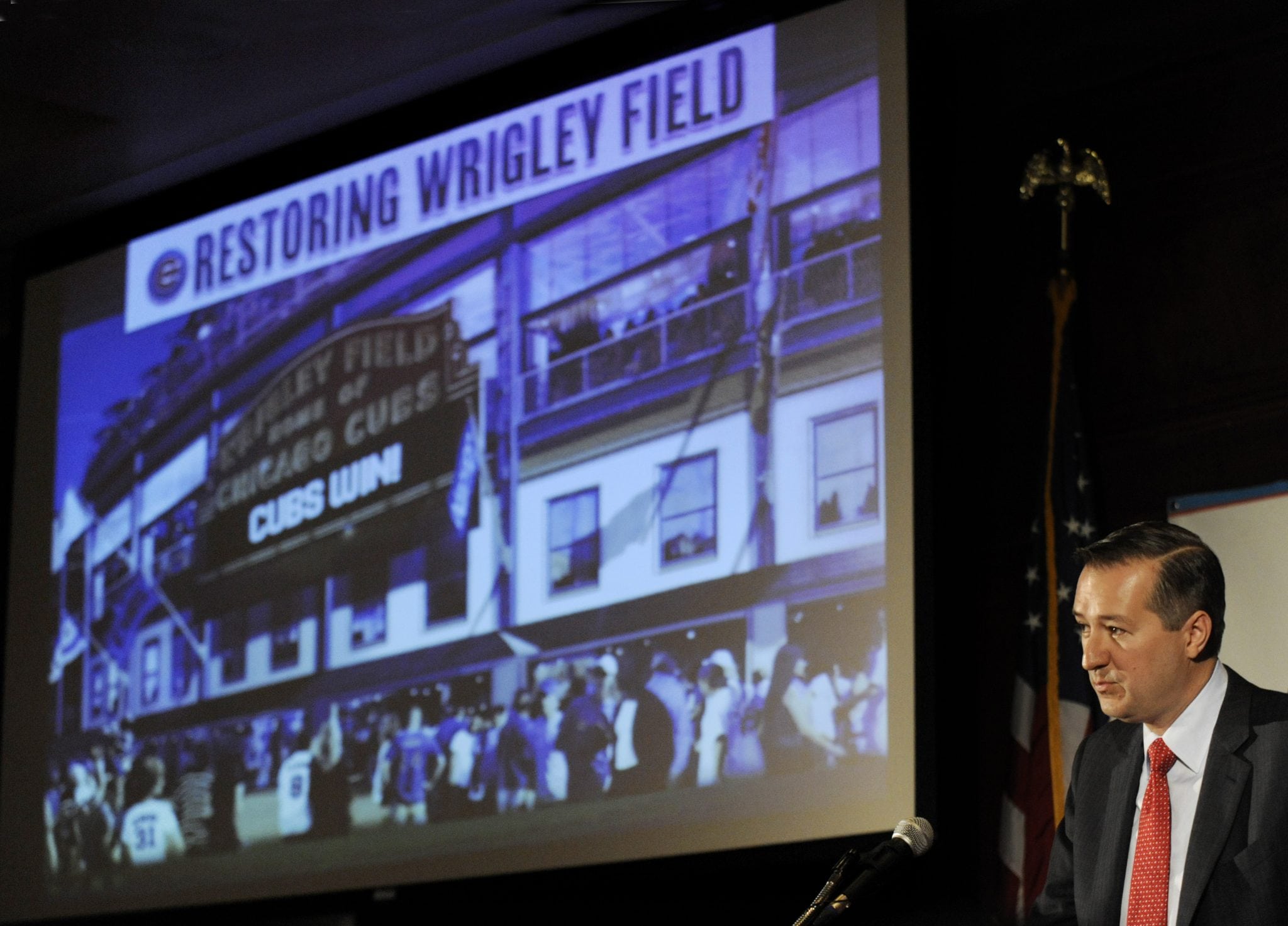Skift Take
While Ricketts should have the option to upgrade the stadium, it's often the case that a team performing better has much more to do with the quality of the management than the number of ads they have surrounding the field.
Chicago Cubs Chairman Tom Ricketts for the first time threatened to move the team out of Wrigley Field if it doesn’t receive government approval for more signs in the outfield, including a giant video scoreboard.
“I’m not sure how anyone is going to stop the signs in the outfield, but if it comes to the point that we don’t have the ability to do what we need to do in our outfield then we’re going to have to consider moving,” Ricketts said at Wednesday morning event at the City Club of Chicago where he was the guest speaker. “It’s a simple as that.”
His comments significantly raised the stakes in Ricketts’ proposal to spend $300 million renovating Wrigley Field as the project seeks approval from the City Council. Since his family purchased the team in 2009, Ricketts has repeatedly said they intended to preserve the 99-year-old ballpark for future generations.
Two weeks ago, the Cubs, Mayor Rahm Emanuel and 44th Ward Ald. Tom Tunney agreed to what the parties called a “framework” of plan to renovate the stadium and develop land around it. The framework included more night games, a video scoreboard in left field and additional advertising throughout the ballpark. In addition, the Cubs agreed to work with residents in the Wrigleyville neighborhood to increase security after games and find more off-site parking to decrease congestion in the area. Many details remain to be finalized but Ricketts said at the time all sides are “together on this.”
But on Wednesday he changed his tune, perhaps indicating his frustration with long negotiations and opposition from rooftop businesses surrounding the stadium to more outfield signs.
His remark about moving came in response to a guest in the audience at Maggiano’s restaurant who asked “What if opponents stop the signs in the outfield?”
Speaking to the media afterward, Ricketts attempted to clarify his comments about moving.
“The fact is we are committed to try to work this out. We’ve always said that we want to win in Wrigley Field, but we also need to generate the revenue we need to compete as a franchise. Having the ability to put video boards and signs in the outfield is very important to us.”
Ricketts estimated that outfield signs could increase revenue by about $20 million.
Beth Murphy, one of the rooftop club owners who attended the breakfast, said, “I don’t know where he is going to move. They come to Wrigley Field because it’s an old ballpark, and it’s in a neighborhood. Look at this team.”
The team’s renovation proposal, made public earlier Wednesday, calls for re-creating green terra-cotta canopies, along with the windows and wrought-iron fencing, that graced parts of Wrigley’s exterior in the 1930s, according to drawings released to the media Tuesday.
At the same time, Crane Kenney, president of the team’s operations, insisted the team needs to make more money to compete, thus the proposed addition of more than 41,000 square feet of signs to the stadium’s interior and surrounding neighborhood.
The plans call for a 6,000-square-foot, three-panel video screen atop the left field wall that would be topped by lights illuminating the power alleys in right and left field. There also would be a 1,000-square-foot sign in right field and four new signs ringing the outfield. Those include two new LED signs akin to the one introduced in right field last year.
While all that, if approved, would change the interior look of the stadium, the area just beyond Wrigley also would take on a different, and far more commercial, appearance. Advertising would adorn a proposed seven-story hotel at the northwest corner of Clark and Addison streets and six-story retail-office building on the triangular parcel west of the stadium. They would be linked by a walkway over Clark with its own sign.
Nonvideo, or static, ads would top the 91-foot-tall hotel, as well as the clock tower on the office building. A three-panel video screen would be placed on the office building, inside the plaza, where seven obelisks would carry more static ads. Banners featuring team sponsors would hang from the hotel, facing Clark.
Change also would come to the southeast corner of the stadium, where the site of the Captain Morgan Club would be replaced with a two-story structure topped by signs and a deck.
Add in the updated concourses, expanded bathrooms, improved player areas and outdoor terraces, and the broader idea is to give the stadium modern amenities, create a town square for Wrigleyville and generate more revenue, both to cover the cost of the renovation and provide revenue for team development, Kenney said.
“We have to generate new revenue,” he said. “We have to catch up to our large-market competitors on ballpark revenues, so this project has to work from a financial perspective as well.”
Tribune reporters Hal Dardick and Bill Ruthhart contributed
(c)2013 the Chicago Tribune. Distributed by MCT Information Services.
![]()
The Daily Newsletter
Our daily coverage of the global travel industry. Written by editors and analysts from across Skift’s brands.
Have a confidential tip for Skift? Get in touch
Photo credit: Cubs chairman threatens to move team from Wrigley. Associated Press
